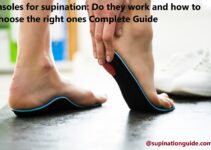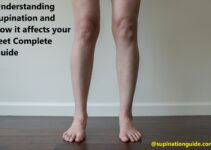Have you ever experienced a sharp pain in the outside of your ankle? If so, you may be suffering from a condition called supination.
In this article, you will learn how to diagnose and effectively treat this condition so that you can get back to living your life without pain.
Supination is a condition that occurs when the foot does not roll outwards correctly when walking or running. This can cause an unnatural gait and potential discomfort or even pain in the foot and ankle joint. Typically, people with supination will have more problems on the inner (medial) side of their feet, although some folks may experience inversion pain as well. Understanding how to recognize signs of supination, as well as appropriate treatment methods, can help you get back on your feet quickly and safely.
In this guide, you will learn:
- What is supination?
- Common symptoms associated with supination
- Long-term outcomes of untreated supination
- Treatment options for supination
- When should you consider orthotics for cushioning support?
Understanding Supination
Supination is the outward rotation of the foot, which occurs when a person takes a step from their heel and rolls outward. It’s an easy gait pattern to recognize as it involves rotating away from one’s midline. The leg and ankle land on the outside edge of the foot first, followed by the rest of the foot. This type of gait can be more pronounced in certain individuals who over-pronate or have excessively tight structures on either side of their feet.
Supination has a significant impact on how we move and walk, as it increases our risk for injury and can be painful if not corrected. It’s important to understand how supination influences your body’s movement so that you can ensure proper care and prevention for any potential issues.
Some common causes of supination include improper shoe selection, weak muscles in the calf complex, pronated ankles, ankle instability, excessive flexibility in the joint capsules or shin splints caused by overtraining or traumatic injury to other parts of your bodies such as hips or knees. If you have any suspected causes for your supination, it’s important to get assessed by a professional who can provide appropriate treatment options.
When it comes to prevention and treatment plans, some general guidelines include avoiding running on hard surfaces; wearing shoes with proper cushioning; stretching prior to training; strengthening key muscles in your lower extremity; incorporating various forms of balance training into your routine; seeking advice from professionals such as physical therapists or podiatrists; and taking rests between bouts of intense activity with activities that are low impact like biking or swimming. By using these tips you can learn how best to manage any symptoms associated with Supination.
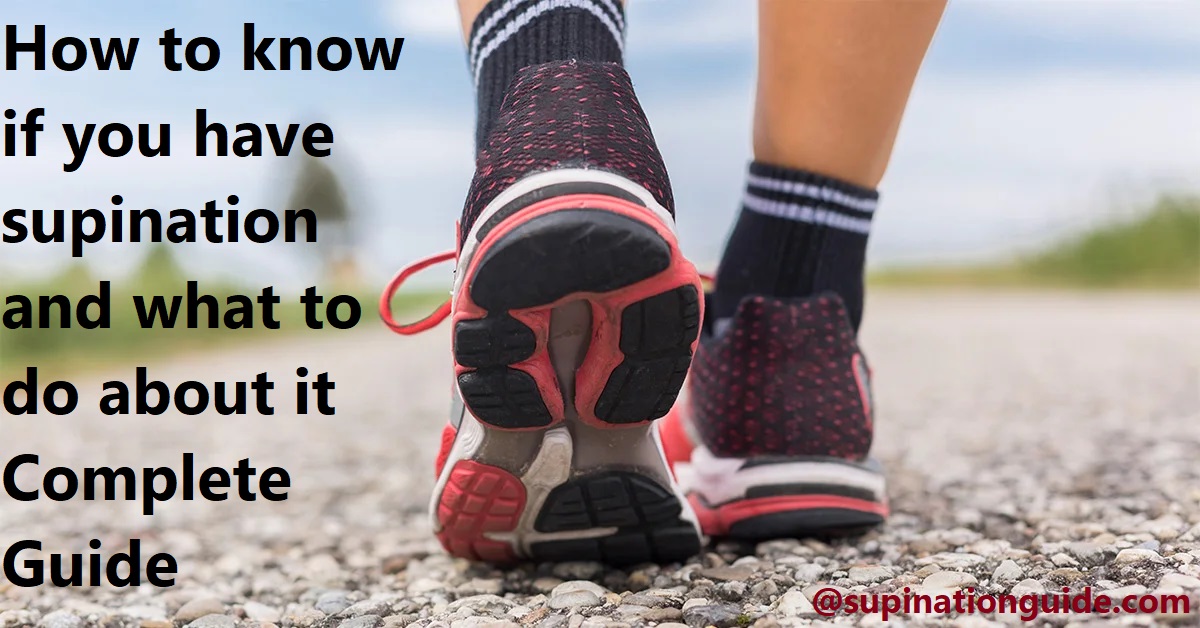
Definition of supination
Supination is a type of foot-related pathology where the foot rolls outward during weight-bearing activity. This differs from pronation, which is an inward rolling of the foot, and is normal during walking. Supination causes the entire lower leg to rotate outwards, affecting gait and resulting in an impact on performance as well as regular chronic pain in some cases.
It’s important to understand if you’re one of the millions who suffer from Supination to properly manage symptoms and keep your feet healthy. Understanding the causes, treatments, and complications can help you stay ahead of any problems that affect your feet’s health.
Causes of supination
Supination, also known as underpronation, can cause a variety of painful conditions for runners. Supination occurs when the foot rolls outward at the ankle after striking the ground. This can cause excessive strain on the outer parts of the foot and can lead to conditions such as plantar fasciitis, shin splints, and Achilles tendonitis. It is important to identify if you have this condition and understand how it is caused in order to take appropriate action.
A variety of factors can cause supination including genetics, certain medical conditions such as diabetes or rheumatoid arthritis, or incorrect biomechanics due to muscle weakness or poor form while running. Those who have a high arch in their foot are also more susceptible to developing plantar fasciitis or other related issues due to supination. The most common external cause however is wearing shoes that do not adequately support your feet properly: improper fit, lack of cushioning or support, inadequate stability etc. When worn frequently over time shoes can lose their shape which forces your feet into incorrect postures while running leading to supination problems – so be sure to regularly check your shoes for wear and tear!
Symptoms of supination
Supination is a common foot condition in which the weight of your body is improperly distributed when you stand or walk. Symptoms can include pain on the inside part of your ankle, pain on the outer part of your foot, and swelling. You may also have difficulty bending your ankle and an inability to move your toes towards the outside of your foot.
Other signs and symptoms associated with supination include having a harder time walking downhill, flat feet, a tendency to pronate when running, difficulty standing on one leg for more than a few moments (due to ankle instability), having more problems running in tight shoes or on uneven terrain, and calluses or corns on the outer parts of your feet. Additionally, tight calves are common in people who supinate as their muscles work harder to help provide stability for their feet.
While some cases of supination can be minor and do not require medical attention, if you continuously experience any symptoms mentioned above it is important to get checked out by a specialist if they don’t go away after rest or become worse over time. A podiatrist can diagnose supination by assessing the way you walk, run and stand as well as checking how much flexibility there is in your ankles and whether they can flex inwardly enough.
Treatments may involve wearing insoles in your shoes that add cushioning so that pressure distributes evenly when you walk; orthotics which are custom-made shoe inserts; physical therapy; specific exercises designed to improve flexibility, strength and balance; taping techniques designed to correct positioning as well as reduce rolling motions; night splints; medication such as ibuprofen or muscle relaxants; cortisone injections directly into painful areas; special braces / night splints; supportive footwear such as running shoes with good cushioning which will absorb some shock during activities like running or walking while encouraging neutral mechanics/positioning in terms of how our feet interact with the ground rather than overpronation (rolling inward) or supinating (rolling outward).
Diagnosis
If you suspect that you may have supination, it is important to consult a doctor to get a proper diagnosis. To diagnose supination, your doctor will first review your medical and family history, noting any joint issues or other medical conditions that could contribute to the discomfort. They will also update your immunization records, as certain immunization can trigger foot pain.
Next, they may take x-rays of your feet and/or an MRI scan to provide a more detailed look at the structure and alignment of the bones and joints in the feet. Depending on how severe the issue appears on the x-ray or MRI images, they may order blood tests or additional scans which can help provide further information about possible causes of supination.
Finally, most doctors will perform a physical assessment by obtaining visual clues such as examining wear patterns on shoes and checking leg length discrepancies or observed deformities in foot structure such as flat arches or overpronation; testing various aspects of range-of-motion and flexible endpoints; sensation; palpation including muscle strength testing–all while looking carefully at gait/walking style changes including evaluation of forefoot loading (or lack there off) when weight bearing on each limb through several stances. This comprehensive assessment helps pinpoint what specific area(s) are affected by supraption so that targeted treatment may be recommended for patient recovery.
How to identify supination through physical examination
Diagnosing supination requires a thorough physical examination that includes a number of assessments. To detect any areas of pronation or supination in the foot, your doctor will need to examine the motions and position of your foot with the hip, knee, ankle and toes in their neutral position.
The doctor may observe your gait while you walk barefoot. He/she will check for any signs of overpronation, such as excessive inward rolling of the heel when walking or running. Your doctor may also ask you to stand on one leg for balance and stability tests. To determine if there is an issue with supination during weight bearing activities, particularly running, your physician may evaluate the range of motion at a single joint like the ankle and other joints like the knee; this helps isolate any issues with alignment and balance between them.
Your doctor can use X-rays or MRI scans to look for any postural misalignments or abnormalities in soft tissue structures (cartilage, tendons and ligaments) that might affect movement pattern. Other physical tests include palpation of key muscles groups in order to assess muscle tone as well as mobilization techniques used to assess mobility within certain joints and/or tissues.
Based on these physical examinations results plus degree swelling/pain present Clinic staff can better diagnose if there is any evidence of narrow arches with resulting lateral instability thus putting additional pressure points on patella tracking components when walking or running leading to additional overuse injuries -likely related to “posterior tibialis dysbalance” otherwise known as “Supinated Foot” syndrome thought processes.
Medical tests that can confirm supination
Certain specific medical tests are often recommended to diagnose supination. X-ray imaging is used to assess the structure of your ankle joint and can identify fusions, malformations, or any other abnormality that could be causing supination. Magnetic resonance imaging (MRI) can provide more detailed information on the same structures. Ultrasound scans may identify fraying and degeneration in connective tissue and ligaments around your ankle joint. A foot scan or pedobarograph may also be used to assess the balance of forces between your foot and ground when you stand and walk.
Other assessments that may be used for diagnosis include a gait analysis to examine how you walk, an ankle mobility assessment to measure how far your ankle can move in different directions, a muscle strength test to measure how well each of your ankle muscles is functioning, and a range-of-motion test which measures how far and in what direction you can push or pull both feet with respect to each other.
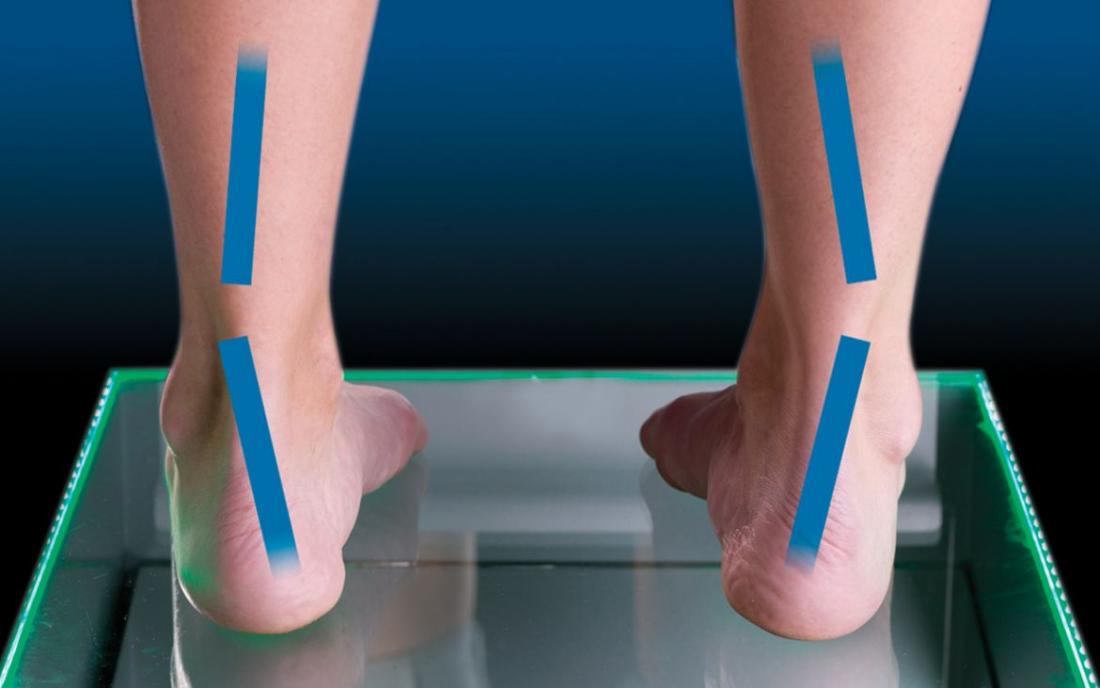
Seeking medical advice for a proper diagnosis
If you suspect you have supination, it is important to seek medical advice and have a professional diagnose your condition. Depending on the severity and cause of your supination, different approaches may be advised. Supination can be caused by muscular imbalances, joint misalignment, injury or disease. A doctor or physical therapist can rule out any medical conditions that may be leading to your supination and suggest methods of treatment.
In some cases, a complete history together with physical examination may be all that is needed for diagnosis of this condition. Your doctor may recommend an X-ray to assess the damage if structural changes or bone abnormalities are suspected as causes of supination.
Once a formal diagnosis has been established, treatment options can then be discussed with your healthcare provider. Treatment will vary depending upon the underlying cause and severity of the problem but may include: using orthotics for support; physical therapy; rest; medications or corticosteroid injections; splinting and casting; bracing; activity modification; stretching exercises; weight loss; biomechanical realignment and/or surgery in extreme cases.
Treatment Options
Supination can be treated and managed through different methods that include physical therapy, orthotics and lifestyle changes. Ultimately, it’s important to identify the underlying problem that is causing the supination in order for treatment to be effective. For example, an injury or abnormality of the ankle joint might need to be addressed with surgery.
Physical therapy: Specialized exercises can help strengthen weak muscles and improve flexibility of tightened muscles around the foot, ankle and lower leg. A physical therapist will design a personalized program with specific exercises depending on each individual’s needs. Treatment may also include modalities such as electric stimulation or ultrasound to reduce pain and inflammation while improving range of motion and function in the affected foot.
Orthotics: Custom-made orthotic devices (arch supports) are designed to help redistribute your weight when you walk or stand away from your midline, e.g., shifted toward your toes due to supination. Orthotics also add cushioning where needed and provide support for weakened muscle groups. Off-the-shelf insoles (e.g., insoles at a retail store) offer only minimal relief if any at all; custom orthotics are often necessary for people with chronic foot problems such as supination or overpronation in order to maximize their comfort level when walking or running long distances.
Lifestyle changes: Wearing properly fitted shoes, avoid high heels if possible, increasing stretching regimens before exercise after rest periods can help manage supination symptoms by providing extra support on your feet during activities and allowing for improved balance through increased flexibility in muscles around the ankle area. Alternative treatments such as acupuncture may also help some people who suffer from chronic pain due to supination. Additionally decreasing high impact activities like running as well as taking anti-inflammatory medications (as directed by your doctor) can reduce inflammation caused by supination more broadly on all parts of the body that have been affected by [supinators syndrome].
Non-surgical treatments for supination
Supination, or excessive outward rolling of the foot, can lead to a range of aches, pains and injuries. Non-surgical treatments are often recommended first for cases of supination which cause less severe pain or discomfort.
Orthotic Devices – Custom orthotics that have been designed to meet your individual needs are one non-surgical option. Orthotics help reduce stress on the feet by providing support and cushioning while redistributing body weight more evenly across your feet as you walk.
Special Insole – Custom insoles can be inserted into shoes to offer additional arch support when needed. Insoles are adjustable and help redistribute body weight so that it is correctly aligned with the ankle bones in the feet which helps alleviate pain associated with supination.
Stretch Your Feet – Stretching before and after exercise helps reduce the risk of injury byincreasing flexibility in the muscles and tendons in your feet. Targeted exercises can also help improve strength, balance, endurance and coordination needed for optimal alignment when walking or running. Exercise balls may also be used to roll out tight spots on your feet before activity as well as promote better balance while standing or walking throughout the day.
Good Shoes – Wearing appropriately supportive shoes is essential for those who suffer from supination or other types of misalignment problems with their stride and stance. For example, people with high arches should choose shoes with good arch support to provide extra cushioningin order to avoid unnecessary pain during movement activities such as running/jogging and aggressive sports activities like basketball/tennis etc.. Additionally, carefully select cushioning footwear when engaging in low-impact activities like walking/hiking that may not require additional shock absorption but still need an adequate amount of comfort stabilization through soles comprised of slightly thicker material than dress shoes typically offer.
Orthotics
Orthotics are custom inserts designed to provide support, alignment, and comfort when placed in your shoes. They may be helpful in the treatment of excessive supination. When you stand or walk, your body weight should be distributed over your heel and arch evenly. However, some people bear too much weight on the outside of the foot instead of throughout the entire foot in a more balanced manner. This can cause an imbalance in gait which can lead to problems such as ankle sprains and plantar fasciitis.
When it comes to excessive supination (under-pronation), orthotics serve as a way to control the movement of your feet by providing cushioning and support for the arch and redistributing pressure evenly across the foot rather than just on one side. Orthotics also allow for better shock absorption which reduces fatigue and impact related injury over time. By controlling motion, orthotics help you maintain proper alignment and reduce discomfort from conditions like bursitis, shin splints, Achilles tendonitis, Achilles tendonosis, painful heel spurs and even knee pain related to improper alignment.
When you are deciding to purchase orthotics for pronation correction there are a few factors you should consider first: type of shoes you plan on wearing them with; will they interfere with pedaling or heel lifters; will they fit into sports shoes; how supportive are they; what material do they come in; what level of customization do they offer; energy return capabilities; price range? You may need to experiment with different types before finding one that works best for you based on activity level, comfort needs or any underlying pathologies that need specific attention such as rigid pronation issues.
Most importantly it is recommended that individuals look for guidance from a healthcare professional like a physiotherapist regarding appropriate recommendation for safety concerns and efficacy claims associated with orthotic use in excessive supination cases.

Exercises and stretches
Exercises and stretches can play an important role in managing and treating supination. When done correctly, they can help strengthen the muscles around the ankle and improve the stability of your feet, without putting any additional strain on them. Additionally, they can also help improve range of motion in your feet and ankles which is important for normal movement.
Some exercises that you can do to manage supination are:
- Walking on toes/heels: This exercise helps strengthen the muscles in your feet and ankles as well as improving flexibility.
- Calf raises: Using a step or a flat surface, stand with one foot on the edge and gently raise yourself up onto your toes before lowering back down again. One set should contain 10-15 repetitions for each leg.
- Ankle circles: Sit upright with both legs extended outwards before slowly rotating one ankle in a clockwise direction then counterclockwise for 10 rotations each direction.
- Foot Templates: Using paper or cardboard cutouts of either of your feet (if you have two different sizes), trace around them to create templates which you can trace over using a pen/pencil or marker as many times as required in 30 second bursts (i.e., 15 repetitions). This activity helps loosen tight muscles and ligaments situated within the foot structures associated with supination.
Other stretches include:
- Standing calf stretch: Stand with both feet hip distance apart before taking a big step backward with one leg while keeping the other stationary forwards; then lunge keeping your heel planted on ground while bending knee pushing hips slightly forward; hold this position for 15 seconds before repeating 2 more times per side.
- Towel pulls: Place a towel underneath your forefoot whilst sitting upright; grab either end of the towel bottom pulling it back towards you in 30 second intervals (i.e., 3×15 seconds); feel this stretches both sides of forefoot which instantly provides relief associated with symptoms related to supination when done regularly throughout day/night time routine(s).
Conclusion
On the whole, having supination is not life-threatening nor does it put any immediate limitations on your movements. However, it can contribute to injuries, such as knee and ankle problems, if left untreated for a long period of time. Therefore, we strongly recommend that if you suspect that you have supination, contact your GP or a qualified physiotherapist to assess your condition and provide advice on the best way to manage it.
The key treatments for supination are correcting the position of the foot during exercise and using insoles or orthotics to provide additional support while walking or running. Strengthening exercises can also help improve the overall stability of your foot with this condition and should be done as part of a full rehabilitation program supervised by a professional. In some cases, surgery may be recommended if other treatments are unsuccessful.
At every step in your treatment process for supination, seek professional advice so that you can be confident in what steps you’re taking to alleviate symptoms and reduce the risk of injury. Remember that continual education about this condition can also give you methods of preventing pain in the future by keeping your feet healthy and strong.
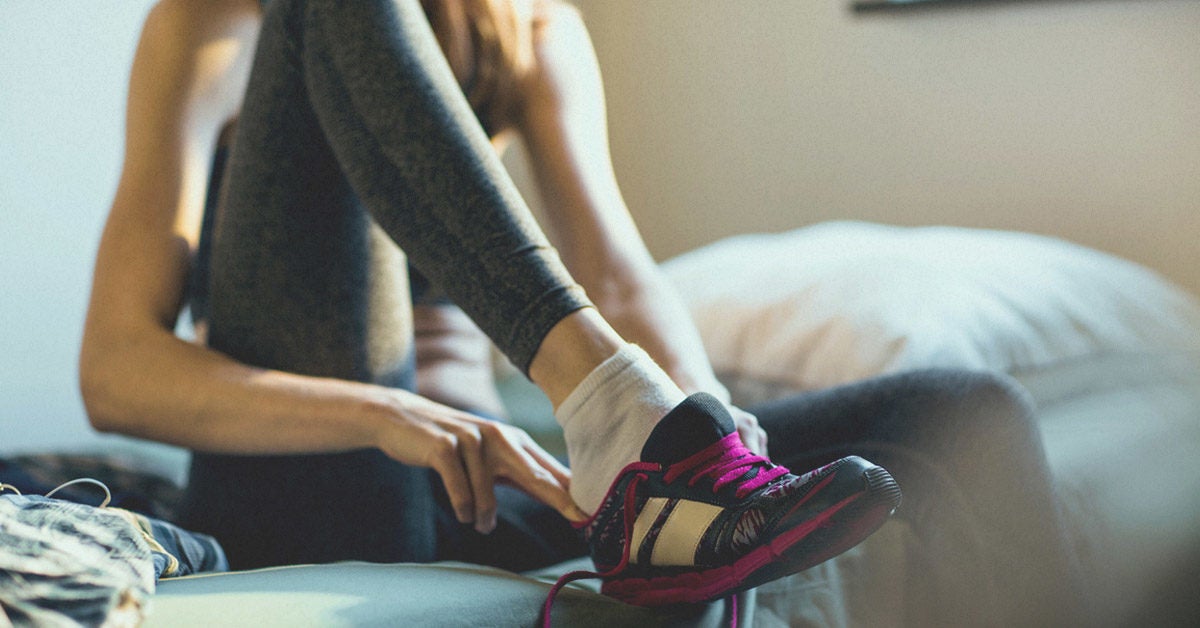
FAQ’s
What to do if you have supination?
If you have supination, it’s important to wear shoes that offer proper support and cushioning, and consider using orthotics to help correct your gait. Strengthening exercises and stretches may also be helpful.
How do you know if you have supination?
You can tell if you have supination by observing the wear pattern on the soles of your shoes. If the wear is primarily on the outside edge of the shoe, it may be an indication of supination. Other signs may include ankle pain, instability, and frequent ankle sprains.
How do you check foot supination?
To check for foot supination, you can perform a simple test called the wet foot test. Wet your feet and step onto a piece of paper or cardboard. If the impression shows most of the foot with a very narrow arch, you may have supination.
Can you reverse supination?
With proper treatment and exercises, it is possible to reverse supination or at least reduce its effects. However, it may take time and effort to correct the gait pattern.
Is supination rare?
Supination is not necessarily rare, but it is less common than pronation, which is the opposite of supination.
What shoe is best for supination?
The best shoes for supination are those that offer good arch support, cushioning, and stability. Look for shoes with a firm midsole and a wide base for stability.
What hurts with supination?
Supination can cause pain in the ankle, foot, and knee, as well as contribute to the development of conditions such as plantar fasciitis and shin splints.
Is supination common?
While supination is not as common as pronation, it is still a fairly common gait pattern.
What muscles are weak in foot supination?
The muscles that are typically weak in foot supination include the tibialis anterior, peroneus longus, and peroneus brevis.
What is a strengthening exercise for supination?
A strengthening exercise for supination may include lateral ankle raises, heel walks, and single-leg balance exercises. These exercises can help strengthen the muscles of the foot and ankle and improve balance and stability.
See Also :
- Best sneakers for supination
- Best asics shoes for supination
- Best tennis shoes for supination
- Best walking shoes for supination
- Best womens running shoes for supination
